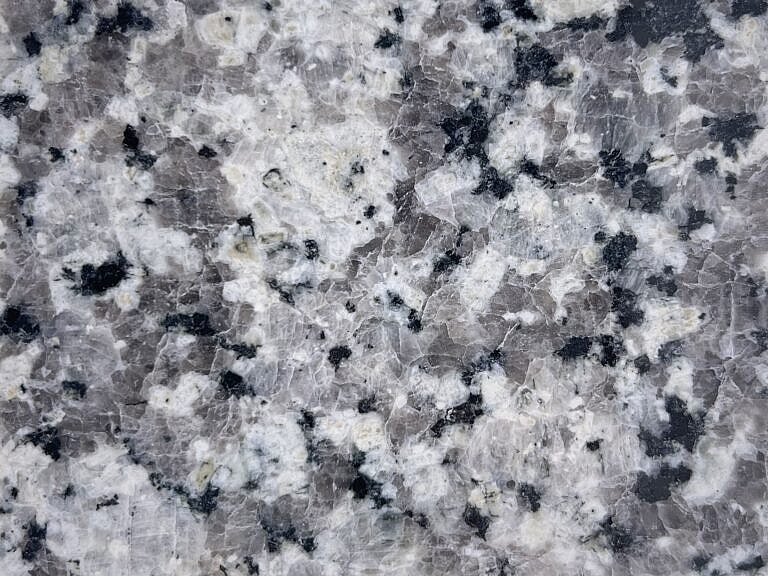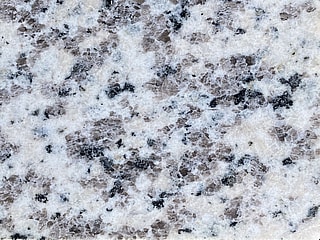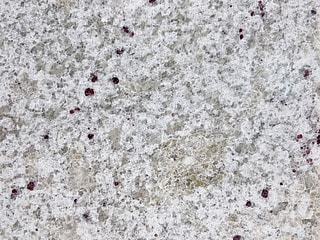Calcutta quartz countertops are sustainable due to their use of recycled materials, energy-efficient production, longevity, low indoor air emissions, and hygienic surfaces.

Table of Contents
Granite's cost reflects its unique aesthetics, laborious extraction, intricate processing, and global transportation demands.
Granite, a natural stone admired for its durability and aesthetic appeal, originates deep within the Earth's crust. Formed over millions of years under intense heat and pressure, this igneous rock comprises a blend of minerals such as quartz, feldspar, and mica, giving it a distinctive and intricate pattern. The uniqueness of each slab of granite, with no two pieces ever being the same, adds to its exclusivity and allure.

The journey of granite from its natural habitat deep in the earth to kitchen countertops and architectural facades is both labor-intensive and resource-heavy.
Site Identification and Preparation: Locating a quarry with high-quality granite reserves involves extensive geological surveys. Once identified, preparing the site for extraction requires substantial infrastructure development, often in remote locations.
Extraction Techniques: Granite extraction employs sophisticated methods like controlled explosions to separate large blocks from the bedrock, followed by diamond wire saws and hydraulic jet piercers for precision cutting. These advanced techniques ensure minimal damage to the stone, preserving its integrity and beauty.
Manpower and Expertise: Highly skilled professionals operate the heavy machinery and execute the extraction process. Their expertise is crucial, ensuring safety and efficiency, which adds to the operational costs.
The intricate process of mining and extracting granite significantly contributes to its final cost:
Equipment and Maintenance: The high-end machinery used in granite extraction requires substantial investment. Regular maintenance and occasional replacement of parts, like diamond-tipped blades, add to the ongoing costs.
Labor Costs: The workforce involved in granite mining and processing is skilled and specialized. Adequate compensation for their expertise and the risks associated with mining operations contributes to the overall cost.
Yield and Wastage: Not all extracted granite is usable. The industry standard suggests that only about 30-40% of the extracted stone is of high enough quality for architectural use. This low yield, combined with the handling and transportation wastage, means that the cost of usable granite is inherently higher.
Operational Expenses: Running a quarry involves numerous expenses, from energy consumption (for machinery operation and on-site facilities) to regulatory compliance costs (like environmental impact assessments and safety protocols).
Transforming raw granite blocks into beautifully polished countertops or tiles involves a series of intricate and labor-intensive processes. The journey from the quarry to your home is not just a matter of cutting and polishing; it's an art that requires precision, skill, and the right technology.
Block Dressing: Initial cuts are made on the quarry blocks to ensure they are of manageable size. This is typically done using high-precision wire saws, which reduce wastage and maintain the integrity of the granite.
Gang Sawing: The dressed blocks are further cut into slabs using a gang saw. This machine can take up to 48 hours to slice a block, depending on the hardness and density of the granite. Each slab is usually around 2cm to 3cm thick.
Resin Application: Post cutting, the slabs are treated with resin to fill in any natural cracks or fissures, ensuring the slab's structural integrity and aesthetic appeal.
Surface Polishing: Slabs are then polished to a smooth finish. A series of gradually finer abrasives are used to achieve the desired gloss and smoothness. The level of polish is often customized based on client preference, ranging from matte to high gloss.
Edge Cutting and Shaping: The edges of the slabs are then shaped and polished. This can be a simple bevel edge, a more intricate ogee, or a full bullnose, depending on the application and aesthetic requirement.
Protective Packaging: Finished slabs are carefully packed to avoid any damage during transit. The packaging material and the care taken during this process add to the overall cost.
Transport to Showrooms and Retailers: Finally, the polished and packed slabs are transported to showrooms and retailers. The transportation cost, especially for international shipping, can be substantial due to the weight and the need for careful handling.
Granite, known for its beauty and durability, often begins its journey in far-flung quarries located in various parts of the world. The transportation and logistics involved in bringing this stone from the quarry to your home are complex and costly. This global supply chain significantly adds to the overall price of granite, making it a premium material.
Remote Quarry Locations: Many high-quality granite quarries are located in remote areas, often in countries like Brazil, India, and China. The initial transportation from these remote sites to processing facilities involves traversing rugged terrain, requiring specialized vehicles and fuel, which adds to the cost.
Handling and Loading: Granite is incredibly heavy, with a density of about 2.75 g/cm³. Handling and loading these massive slabs onto trucks or freight containers require cranes and skilled labor, further contributing to the initial transportation cost.

Freight Costs: Shipping granite internationally is expensive due to its weight. The cost is calculated based on the metric tonne, and with an average container carrying about 20-30 tonnes of granite, the shipping costs can add up quickly.
Customs and Duties: Upon arrival at the destination country, customs fees and import duties are applied. These fees vary from country to country and can significantly impact the final cost of the granite.
Specialized Transportation: The final leg of the journey, from the port or warehouse to the final destination, requires specialized transportation due to the weight and size of the granite slabs. This often involves additional handling and care to ensure the granite arrives without damage.
Handling and Storage: Proper storage facilities are required to keep the granite safe until it is ready for installation. This storage, along with additional handling to move the granite into these facilities, further adds to the logistical costs.
Granite has long been cherished in the world of design and home renovation for its natural beauty and the sophisticated touch it adds to any space. The stone's unique aesthetic traits and wide range of colors make it a favorite among designers and homeowners alike.
Unique Patterns and Colors: Each slab of granite boasts a unique pattern, no two pieces are ever the same. The stone comes in a myriad of colors, ranging from subtle earth tones to bold and vibrant hues. This uniqueness ensures that each granite installation is one-of-a-kind.
Natural Elegance: The depth and richness of granite, with its natural grain and texture, add an element of luxury and sophistication to any space. Whether used for countertops, flooring, or wall cladding, granite elevates the aesthetic appeal of the area.

The preference for granite is not only due to its beauty but also because of its durability and ease of maintenance, making it a practical choice for busy households and high-traffic areas.
Resistant to Wear and Tear: Granite scores a 7 on the Mohs scale of mineral hardness, making it highly resistant to scratches, chips, and cracks. This durability makes it ideal for kitchen countertops where the surface is subjected to a lot of wear and tear.
Heat Resistance: Granite's resistance to heat is unmatched. It can withstand high temperatures without getting damaged, making it perfect for kitchens where hot pots and pans are often placed directly on the surface.
Low Maintenance: Keeping granite clean is relatively easy; it just needs to be wiped with a mild detergent and water. Sealing the surface once a year helps in maintaining its luster and making it resistant to stains.
Longevity: When properly maintained, granite can last a lifetime. Its longevity makes it a cost-effective choice in the long run, despite the initial investment being high.
Calcutta quartz countertops are sustainable due to their use of recycled materials, energy-efficient production, longevity, low indoor air emissions, and hygienic surfaces.
Every single pattern in our this year’s selection is a masterpiece of design intelligence. They are all Carrara quartz; they all stunning, luxurious and understated. They’re not just part of the space, they’re the very essence of space, the yin to light’s yang as white bends its warmth and glow. The available surfaces present lighting and textural opportunities as their whisper-thin veining of some of the most delicate slabs is just the beginning. Darks, heavily veined statement pieces offer something more profound. In short, the top Carrara quartz patterns of the year are a tailored luxury, one that has to be experienced to be understood.
Calcutta Quartz offers various thicknesses (1 cm, 2 cm, 3 cm), finishes (polished, honed), and slab sizes for design flexibility.
As COVERINGS 2024 drew to a close on April 25th, we reflect back on four exhilarating days of innovation and elegance in stone surfaces, prominently showcased by PANMIN and Cambodian Zulite Stone at Booth 1837. This year’s event at the Georgia World Congress Center was nothing short of spectacular, with thousands of professionals and enthusiasts converging to explore the latest trends and advancements in the industry.
Calcutta quartz, also referred to as Calacatta quartz, is a highly popular material within interior design and architecture. It has specific details that distinguish it from other types of quartz, and it is considered a premium choice for both residential and commercial use. Below, I would like to discuss the details:
To avoid problems with the installation, it is important to have the appropriate tools and materials on hand. Here is what professionals need: